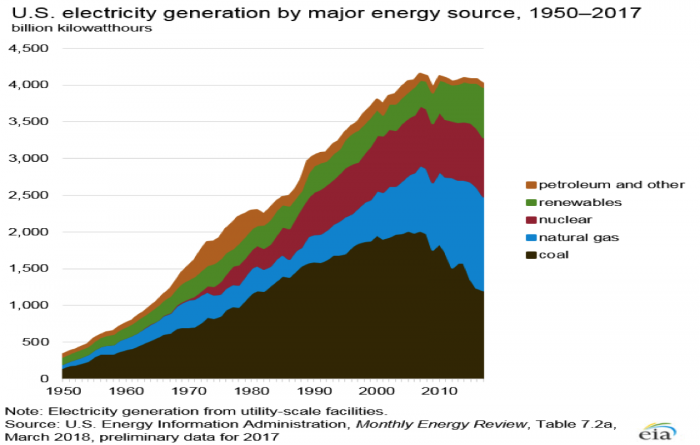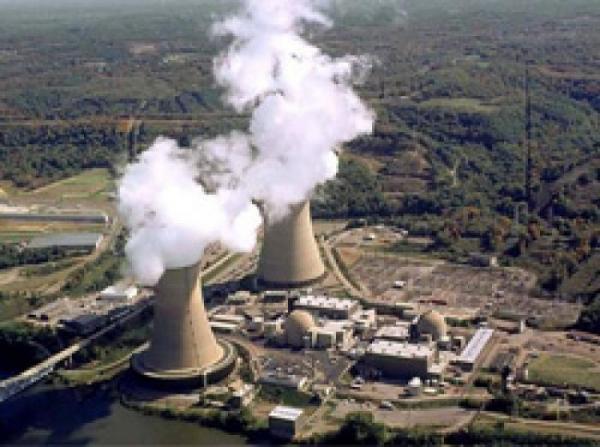The Water-Energy Nexus
Water is a crucial ingredient to develop and produce energy, a portion of which is then used to generate electricity. Much of the electricity in the United States is produced using steam turbines powered by coal or natural gas to heat water in a boiler to produce steam. A steam turbine converts the kinetic energy of a moving fluid (liquid or gas) to mechanical energy as steam is forced against and rotates a series of blades mounted on a shaft. The shaft is connected to the generator which converts its mechanical energy to electrical energy.
In 2017, about 4,015 billion kilowatt-hours (kWh) (or 4.01 trillion kWh) of electricity were generated at utility-scale facilities in the United States with 31.7% from natural gas, 30.1% from coal, 20% from nuclear energy, 17.1% was from renewable energy sources, and 1.1% from petroleum products. The following graphic shows energy sources for power generation from 1950-2017, note the increase in natural gas and the decrease in coal use for power generation in recent years.

Note that nearly equal amounts of natural gas and coal are used to generate power and that fossil fuels represent more than 60% of the sources used. While significant amounts of water are used for steam or cooling water in a thermoelectric plant, most of the water is returned back to the water body that it was withdrawn from, though will have been heated up so thermal pollution is involved. About 2-3% of the water used for cooling is lost via the cooling towers as shown in the picture below of a nuclear power plant in Pennsylvania.

Electricity is in turn used to pump and treat water from surface or aquifer sources and then to treat the resulting wastewater, thus creating this interdependence known as the water-energy nexus. The energy sources contained in oil and gas reservoirs require water to extract and process these hydrocarbons. This is especially true in unconventional reservoirs such as shales or other “tight” (low permeability) reservoirs, where several million gallons may be necessary to hydraulically fracture the shale to allow the hydrocarbons to flow out of the reservoir toward the oil or gas well. While all fuel sources use some volume of water for production, some forms of fuel are clearly more water efficient per million British Thermal Units (MMBTUs) as summarized in the table below.
|
Energy Resource |
Gallons of Water Used per MMBTU1 |
|
Deep Shale Natural Gas |
0.84 - 3.702 |
|
Coal (no slurry transport) |
2 - 8 |
|
Nuclear |
8 - 14 |
|
Conventional Oil |
8 – 203 |
|
Synfuel - Coal Gasification |
11 - 26 |
|
Oil Shale |
22 - 56 |
|
Tar Sands |
27-68 |
|
Enhanced Oil Recovery (EOR) |
21-2,500 |
|
Biofuels |
>2,500 |
-
Source: “Deep Shale Natural Gas: Abundant, Affordable, and Still Water Efficient”, GWPC, 2010.
-
The transport of natural gas can add up to two gallons per MMBTU.
-
Includes refining which consumes a major portion (90%) of the water needed (7-18 gal per MMBtu).